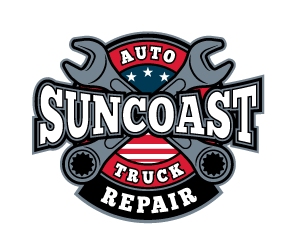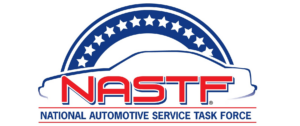Proud Member of NASTF


If you run a business that relies on a fleet of vehicles, you know how important it is to keep them in good condition. A breakdown on the road can not only cost you time and money but also damage your reputation. For this reason, fleet maintenance and repair should be a top priority for any business owner or manager. This comprehensive guide is designed to help you understand the importance of fleet repair, common issues, cost-saving tips, maintenance schedules, choosing the right repair service provider, advancements in technology, preventive maintenance, and best practices to keep your vehicles on the road and your business running smoothly.
Fleet repair is essential for any business that relies on vehicles to deliver goods or provide services. Not only does it help to avoid costly breakdowns, but it also ensures that your vehicles are running efficiently, which can help reduce fuel costs and increase productivity. The maintenance and repair of your fleet vehicles should be a priority and should be included in your overall business plan. This will help to minimize downtime and ensure that your vehicles are always ready when you need them.
It’s important to remember that regular maintenance is not just about fixing problems, it’s also about preventing them. By taking a proactive approach to fleet maintenance, you can catch potential issues before they become major problems. This can save you both time and money in the long run.
One of the most common fleet repair issues is engine problems. These can be caused by a variety of factors, including poor maintenance, fuel quality, and driving habits. Other common issues include brake problems, transmission issues, and electrical problems. These issues can be caused by a variety of factors, including wear and tear, improper use, and environmental factors.
Fortunately, many of these issues can be prevented by implementing a regular maintenance schedule. By performing regular oil changes, tire rotations, and other maintenance tasks, you can help prevent many of these common problems.
Fleet repair costs can add up quickly, but there are several ways to save money in the long run. One of the best ways to save money is to implement a preventive maintenance plan. By catching potential issues before they become major problems, you can save money on repairs and reduce downtime.
Another way to save money on fleet repairs is to choose the right repair service provider. Look for a provider that specializes in fleet maintenance and has experience working with your type of vehicles. This can help ensure that repairs are done quickly and correctly, which can help reduce downtime and save you money.
Finally, it’s important to keep detailed records of all maintenance and repairs. This can help you identify trends and potential issues before they become major problems. It can also help you negotiate better prices with repair service providers.
A fleet maintenance schedule is essential for any business that relies on vehicles to operate. It helps ensure that vehicles are maintained regularly and that potential issues are caught early. There are several key elements to a good fleet maintenance schedule.
First, you’ll need to identify all the vehicles in your fleet and create a schedule for each vehicle. This should include regular maintenance tasks, such as oil changes and tire rotations, as well as any repairs that need to be done.
Next, you’ll need to establish a regular inspection schedule. This should include a visual inspection of the vehicle, as well as any necessary diagnostic tests. You should also establish a schedule for cleaning and detailing the vehicles.
Finally, it’s important to establish a system for tracking maintenance and repairs. This can be done using software or a manual system. The important thing is to ensure that all maintenance and repairs are documented and tracked.
Choosing the right repair service provider is essential for any business that relies on a fleet of vehicles. You’ll want to look for a provider that specializes in fleet maintenance and has experience working with your type of vehicles. You should also look for a provider that offers a wide range of services, including preventive maintenance, emergency repairs, and diagnostic testing.
Other factors to consider when choosing a repair service provider include location, price, and reputation. You’ll want to choose a provider that is conveniently located and offers competitive pricing. You should also look for a provider with a good reputation for quality work and customer service.
Technology is constantly evolving, and the fleet repair industry is no exception. There are several advancements in technology that can help improve fleet maintenance and repair. One of the most significant advancements is the use of diagnostic tools and software. These tools can help identify potential problems before they become major issues, which can help reduce downtime and repair costs.
Another technological advancement is the use of telematics. Telematics technology allows fleet managers to monitor vehicles in real-time, which can help identify potential issues and improve overall fleet efficiency. This technology can also help reduce fuel costs and improve driver safety.
Preventive maintenance is one of the most important aspects of fleet repair. By performing regular maintenance tasks, such as oil changes and tire rotations, you can help prevent many common problems. It’s also important to perform regular inspections and diagnostic tests to catch potential issues before they become major problems.
Other preventive maintenance tasks include cleaning and detailing the vehicles, checking fluid levels, and inspecting belts and hoses. By implementing a regular preventive maintenance schedule, you can help keep your vehicles in top condition and avoid costly repairs.
In addition to regular maintenance and repairs, there are several best practices that can help improve fleet efficiency and reduce repair costs. One of the best practices is to establish a driver training program. By providing drivers with training on proper vehicle use and maintenance, you can help reduce wear and tear on your vehicles and improve overall efficiency.
Another best practice is to establish a fuel management program. By monitoring fuel usage and implementing fuel-saving strategies, you can help reduce fuel costs and improve overall efficiency.
Finally, it’s important to establish a system for tracking maintenance and repairs. This can help you identify trends and potential issues before they become major problems. It can also help you negotiate better prices with repair service providers.
Fleet repair is an essential aspect of any business that relies on vehicles to operate. By understanding the importance of fleet maintenance and repair, common issues, cost-saving tips, maintenance schedules, choosing the right repair service provider, advancements in technology, preventive maintenance, and best practices, you can help keep your vehicles on the road and your business running smoothly. Remember to prioritize regular maintenance and inspections, choose the right repair service provider, and implement preventive maintenance and best practices to keep your fleet in top shape.




